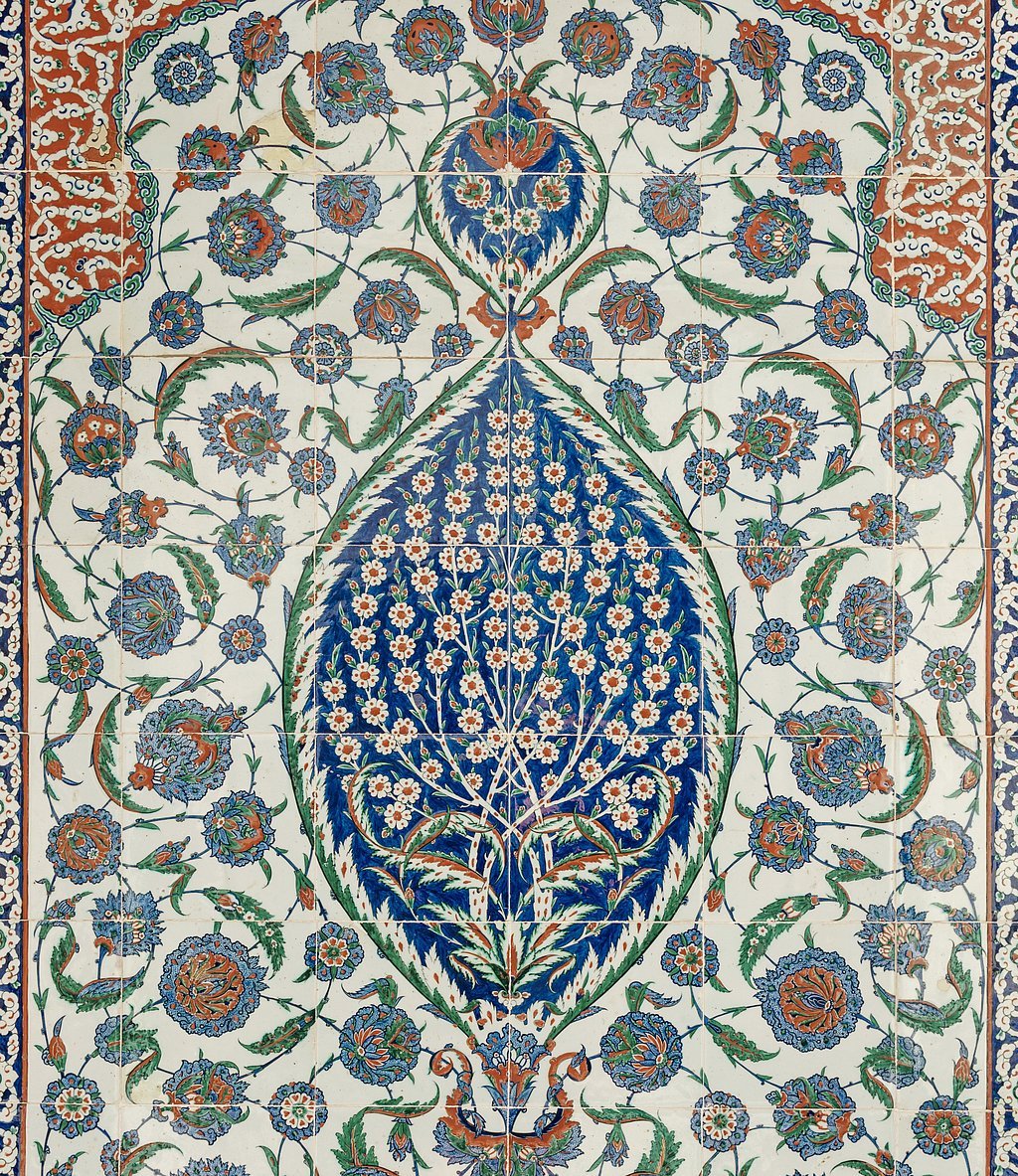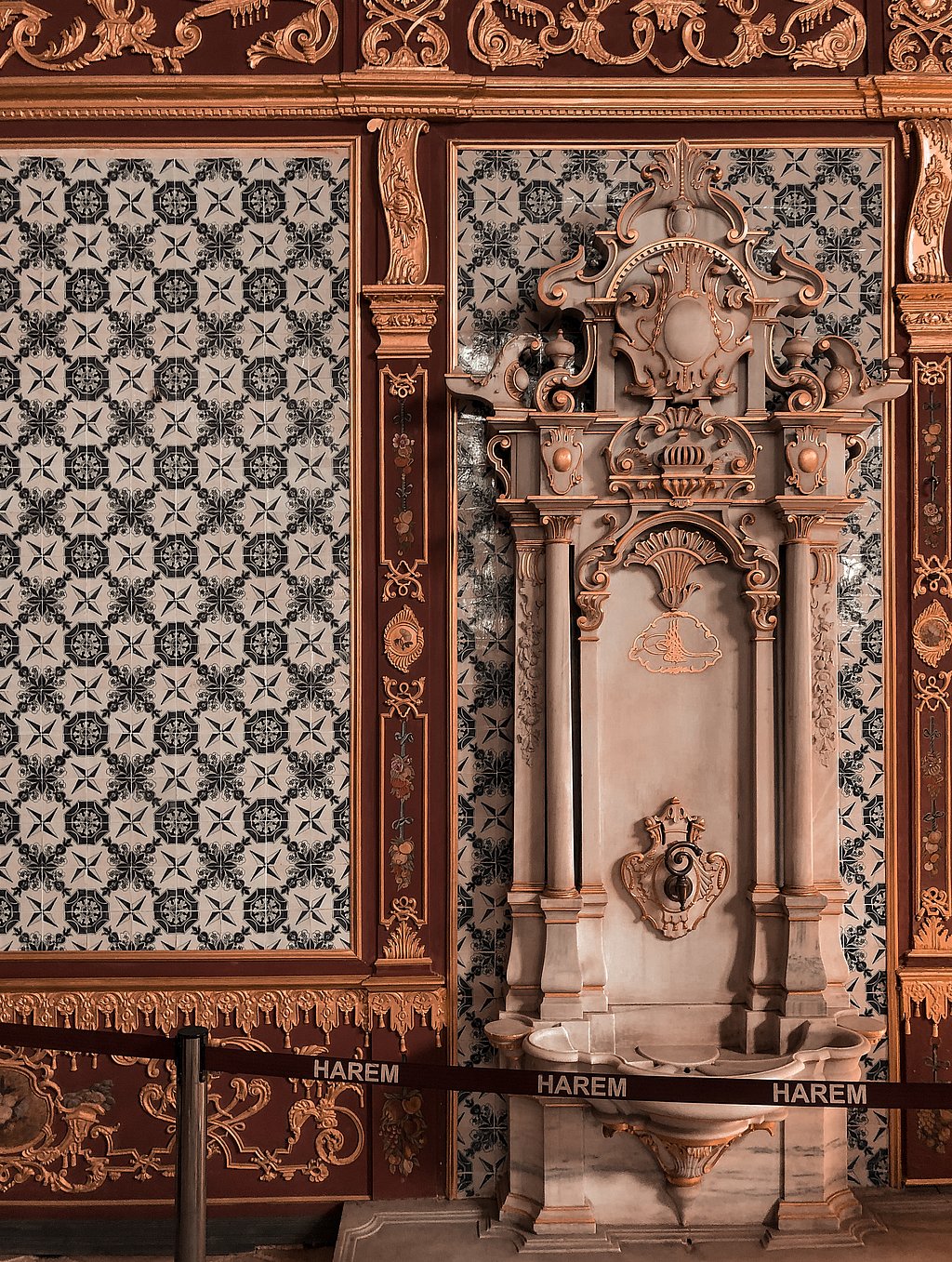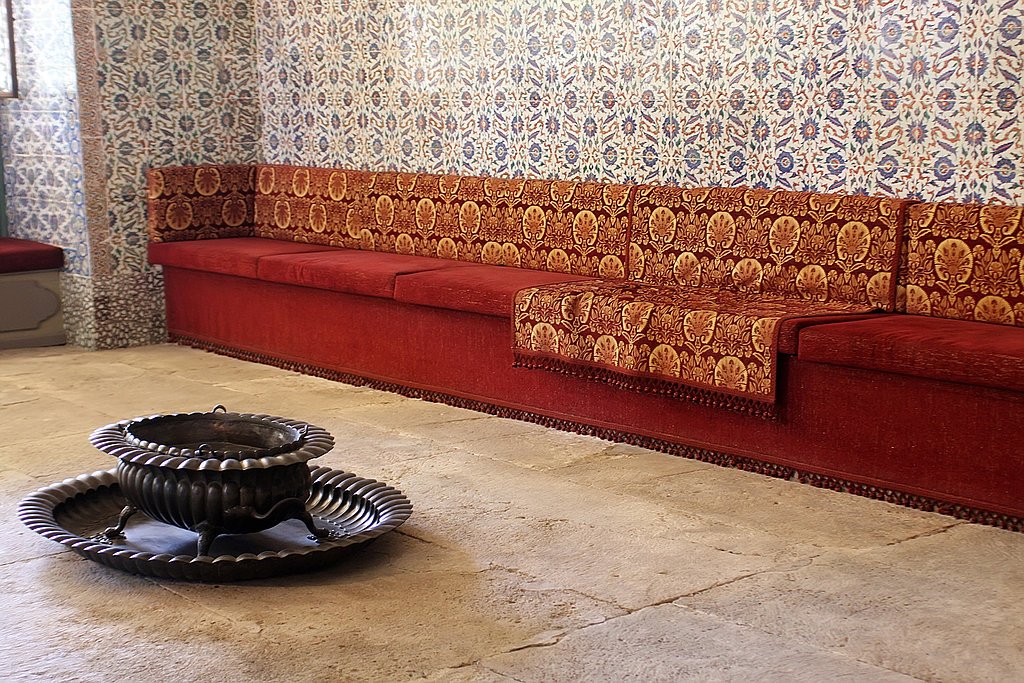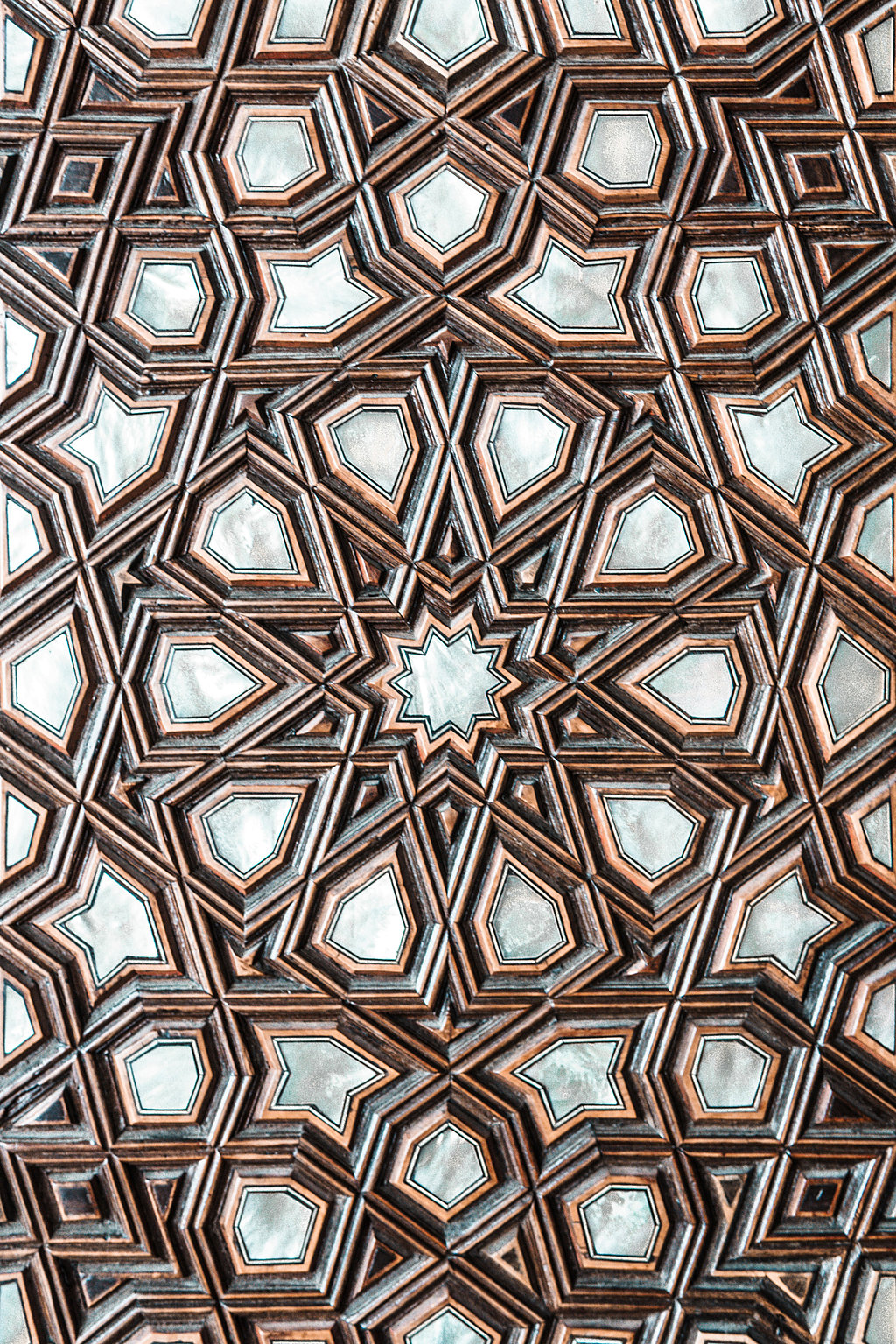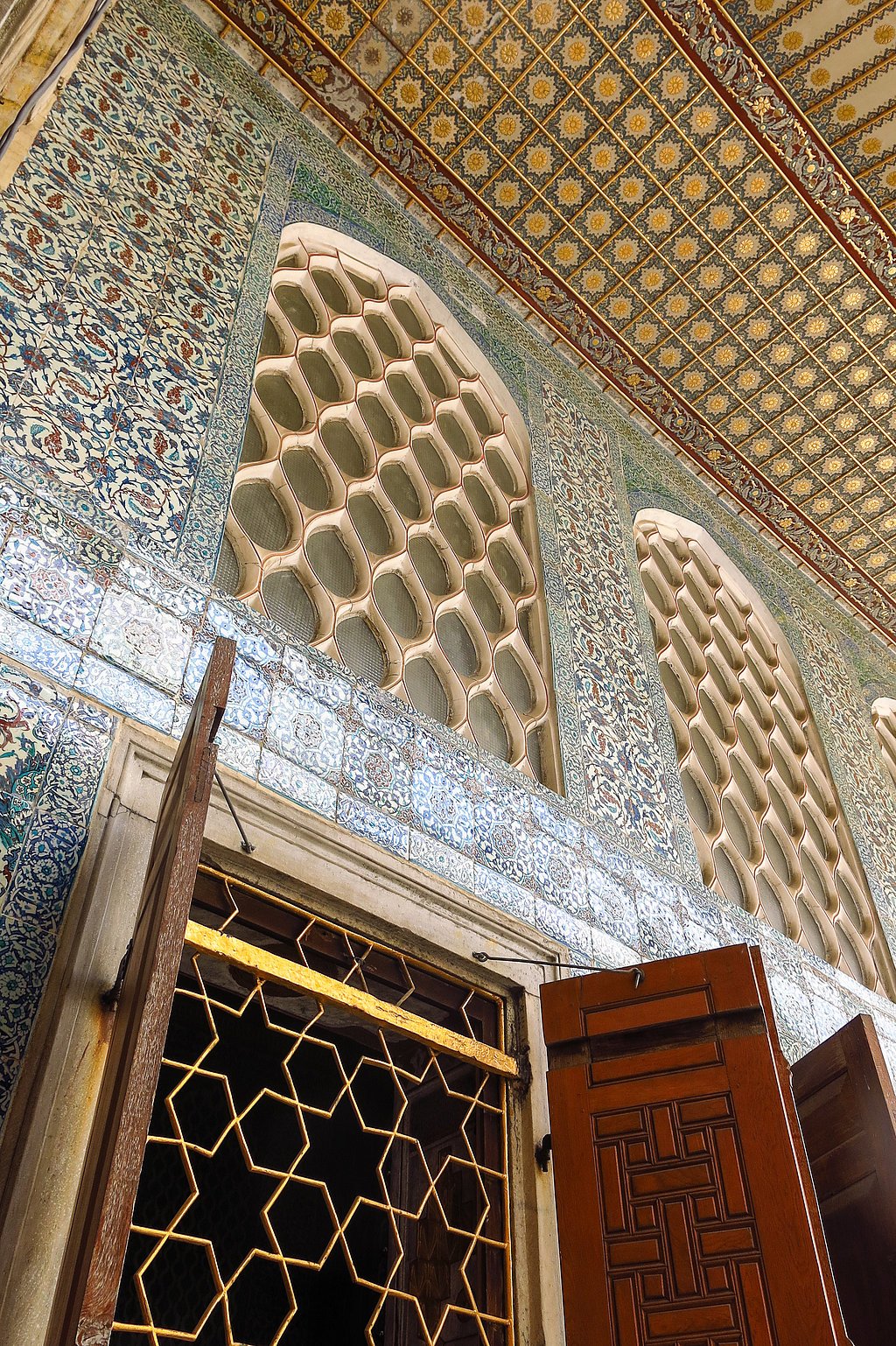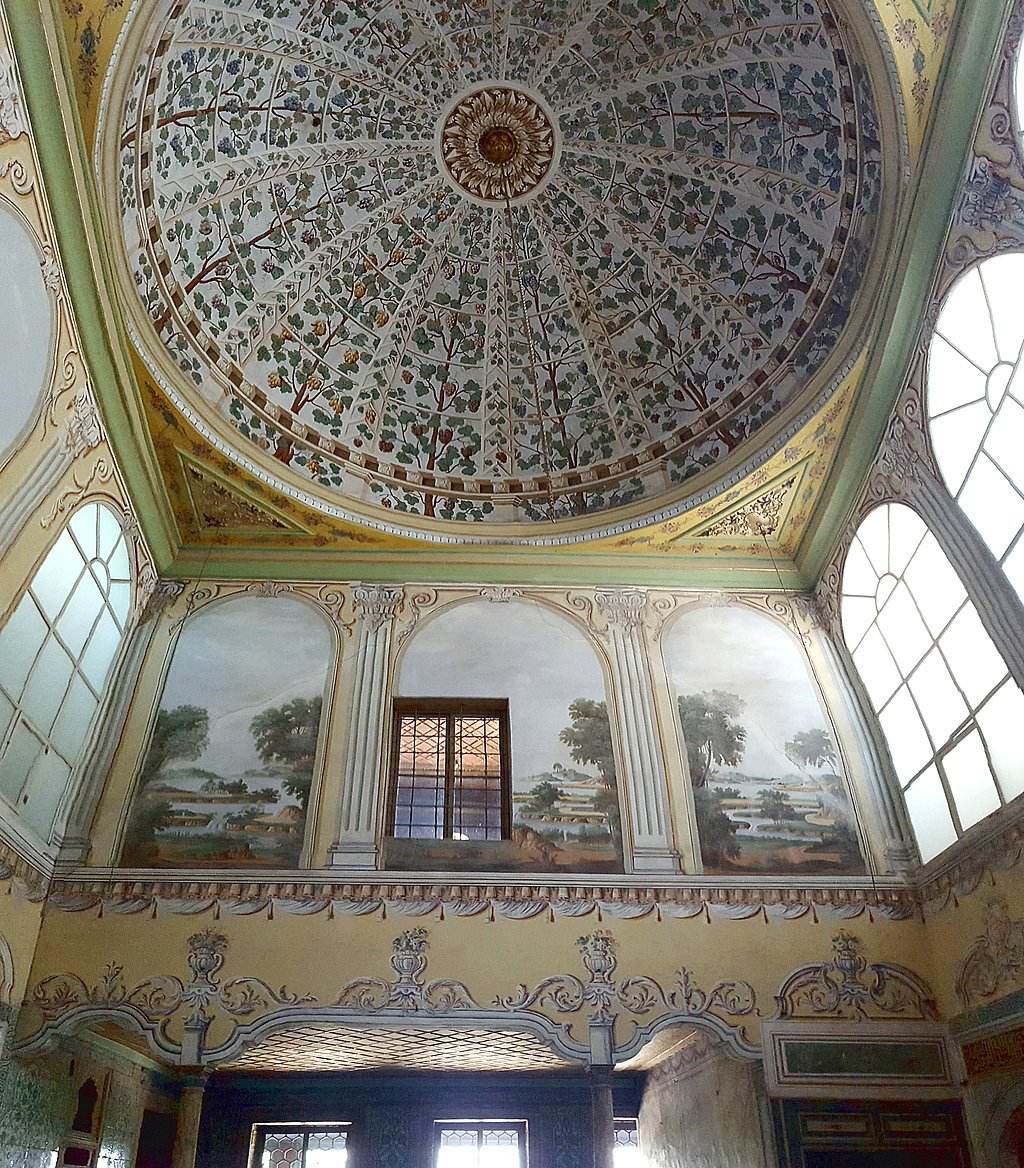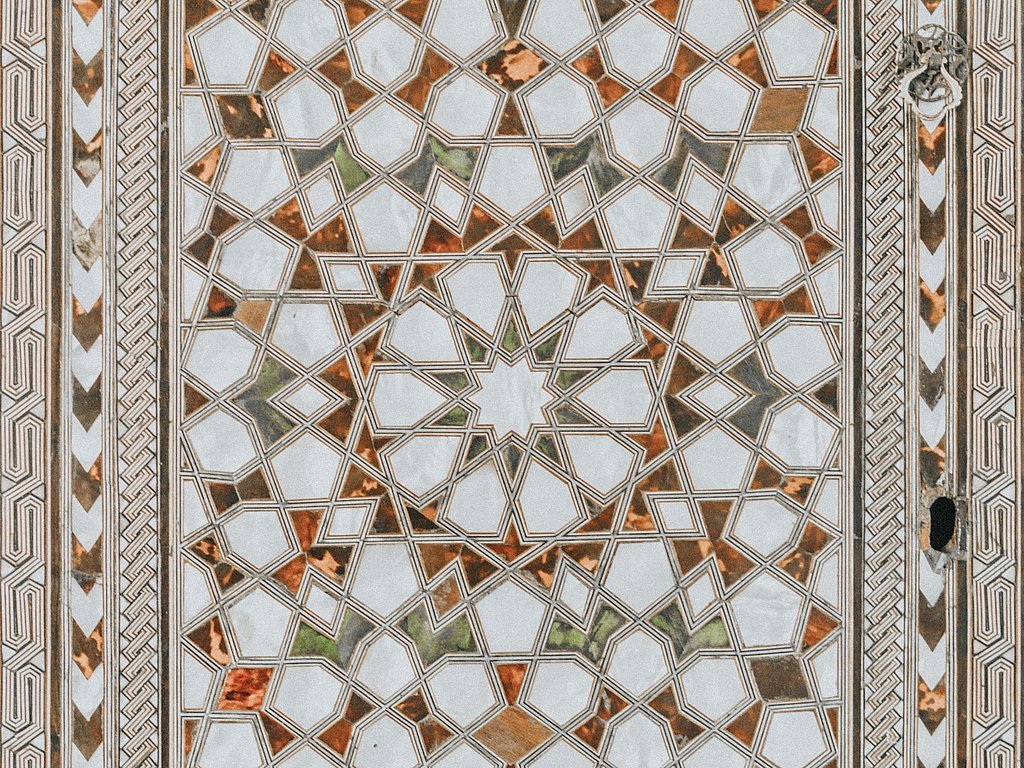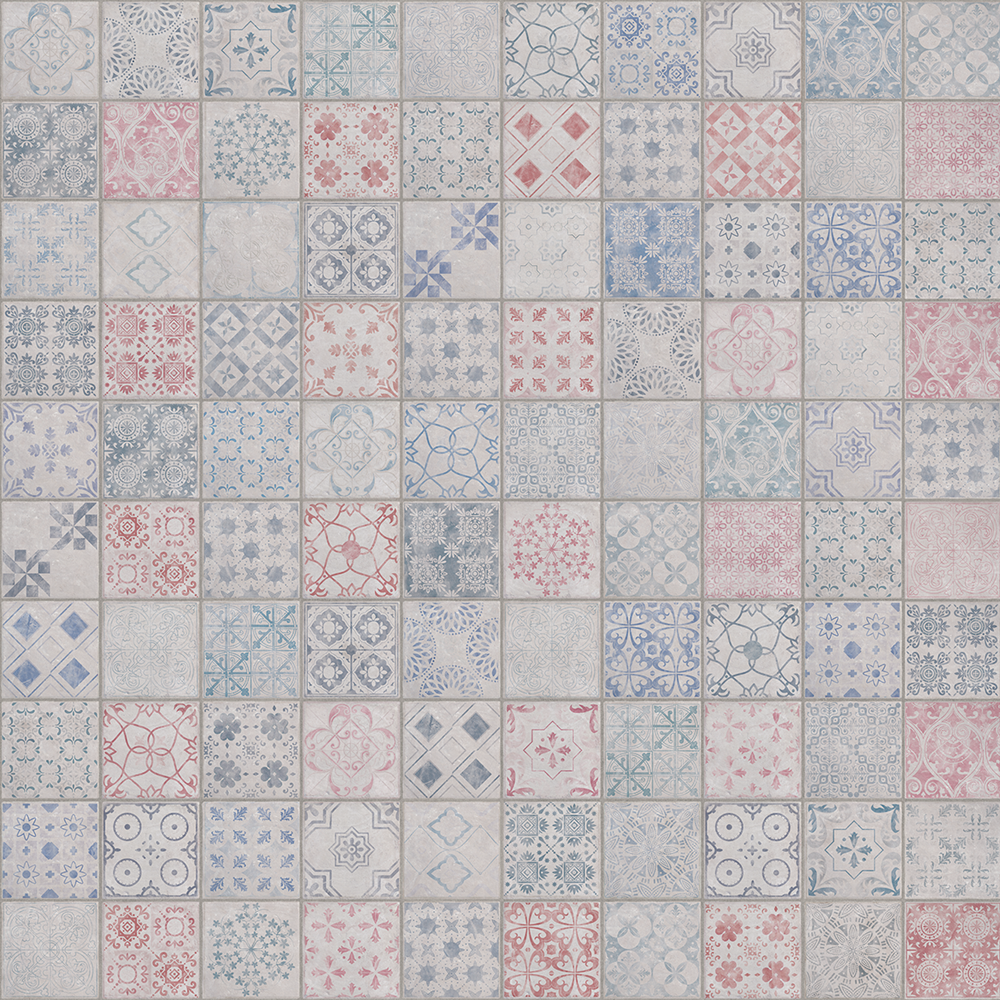High above Istanbul, the world-famous Topkapı Palace has been enthroned for half a millennium. It was built in the fifteenth century by Ottoman Sultan Mehmet II. The Palace served, for over four hundred years, both as the administrative center of the Ottoman Empire and residence of the ruling sultan families.
Everywhere in the palace are the beautiful, masterfully made decorative tiles, the "çini". Our “Mariza” decor translates thousands of years of art history into the virtual world.
Rich inspiration for decor development: The "çini" and its epic Mix & Match success story.
Throughout its history, Topkapı Palace has been rebuilt and added on to during its long existence. All the while, unaffected by any of these changes, a colorful, decorative mix and match design element prevailed: “çini”, the typical Anatolian decorative mosaic tiles. Its appealing geometric and floral pattern arrangements are among the most prominent artistic stylistic devices in Anatolia. They prove popular in art, architecture, mosques and private mansions, public spaces, fountains, tombs, and decorating interior and exterior living spaces.
çini – Bestselling Design with Art History
The name, cini, originates from the ancient Persian Çin-I, which roughly translates into “Chinese style tiles”, pulling into our story a much older, cultural and technical worldwide exchange. This bodes the question, was this design element successful well before the Ottoman Empire? Supporting art-historical evidence can be found as early as the 8th century, in the northwest Chinese region around Xinjiang, the territory of the Turkic Uighurs.
During the rule of the Seljuqs, who in the 10th century were nomads in the present-day Kazakh steppe, this popular art form found its way into Anatolia where it was subtly reinterpreted. The Ottoman Empire reinvented çini designs, and from then on, the architectural-artistic mosaic was anchored indispensably in their art and everyday life.
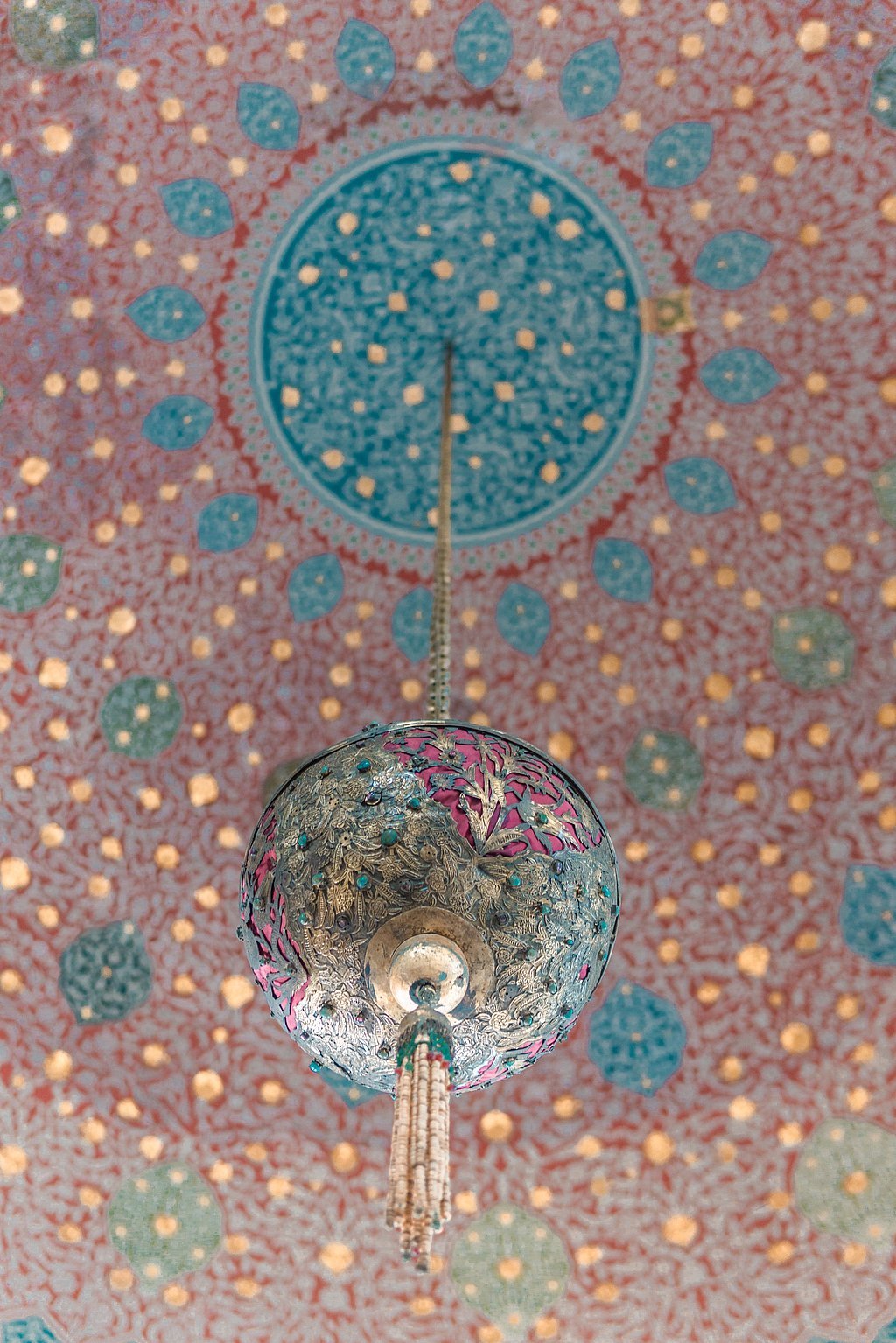
A Successful Design!
Thanks to this exchange and inheriting a design motif from one culture to the next, we’ve long been involved in the history of our “Mariza” surface decor.
In 2018, “Mariza” continued the never-ending success story of çini. By digitalizing çini, our design team at Schattdecor's Gebze location in Türkiye responded, in part, to a worldwide increase in demand for digitally printed tile decors. Then a specific inquiry from a customer actually got the ball rolling: They wanted an expressive digital print decor with the look and feel of ceramic tiles. By using the latest production technology, we sent thousands of years of art history on its path to a new transformation process.
“Mariza” translates thousands of years of art history into the virtual world
While developing this decor, our Turkish colleagues found wide-ranging inspiration in çini and its monumental mix and match success story. As a result, “Mariza” digitalizes the epoch-making, decorative mosaic tile art, and thus greatly enhances modern living spaces by linking with its unparalleled cultural history.
From the very beginning, our Turkish teams were unwaveringly counting on the success of “Mariza”. Through great persuasiveness, they developed initial drafts and combined multiple çini patterns with one another. By using test layouts and cogent argumentation, they convinced decision makers of the huge potential the decor encased.
Mix and Match Down to the Last Detail
To complete the story, Mariza’s development combined distinct techniques and technologies. We standardized the actual motifs by using a digital vector file and formed a homogeneous whole by scanning the material surrounding the motif from actual Turkish ceramics and then combining it with the digitalized motifs.
Dolmabahçe
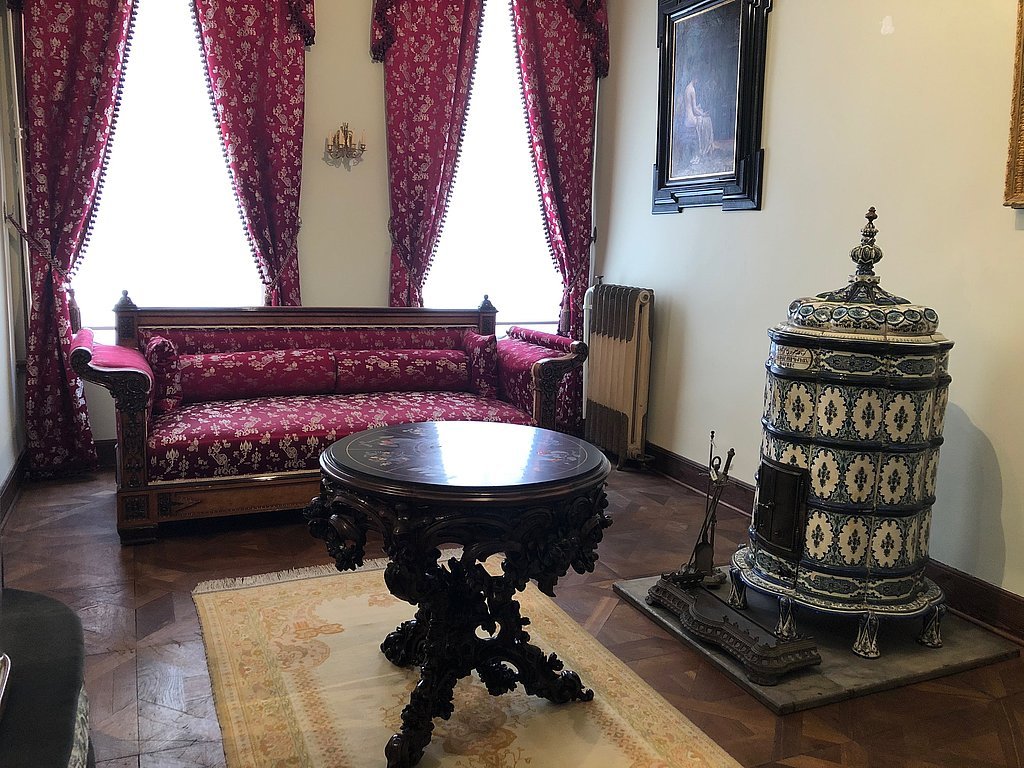
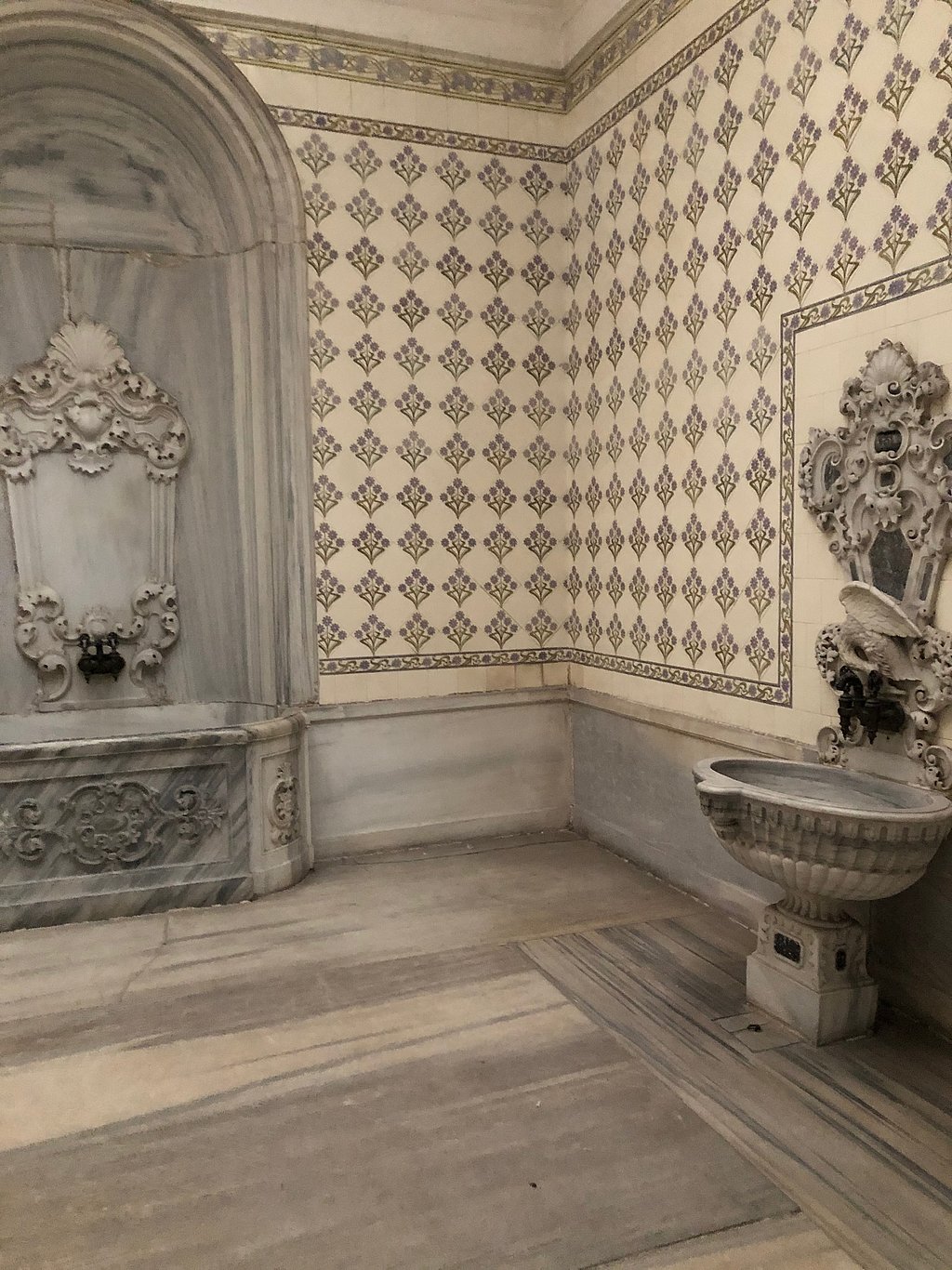
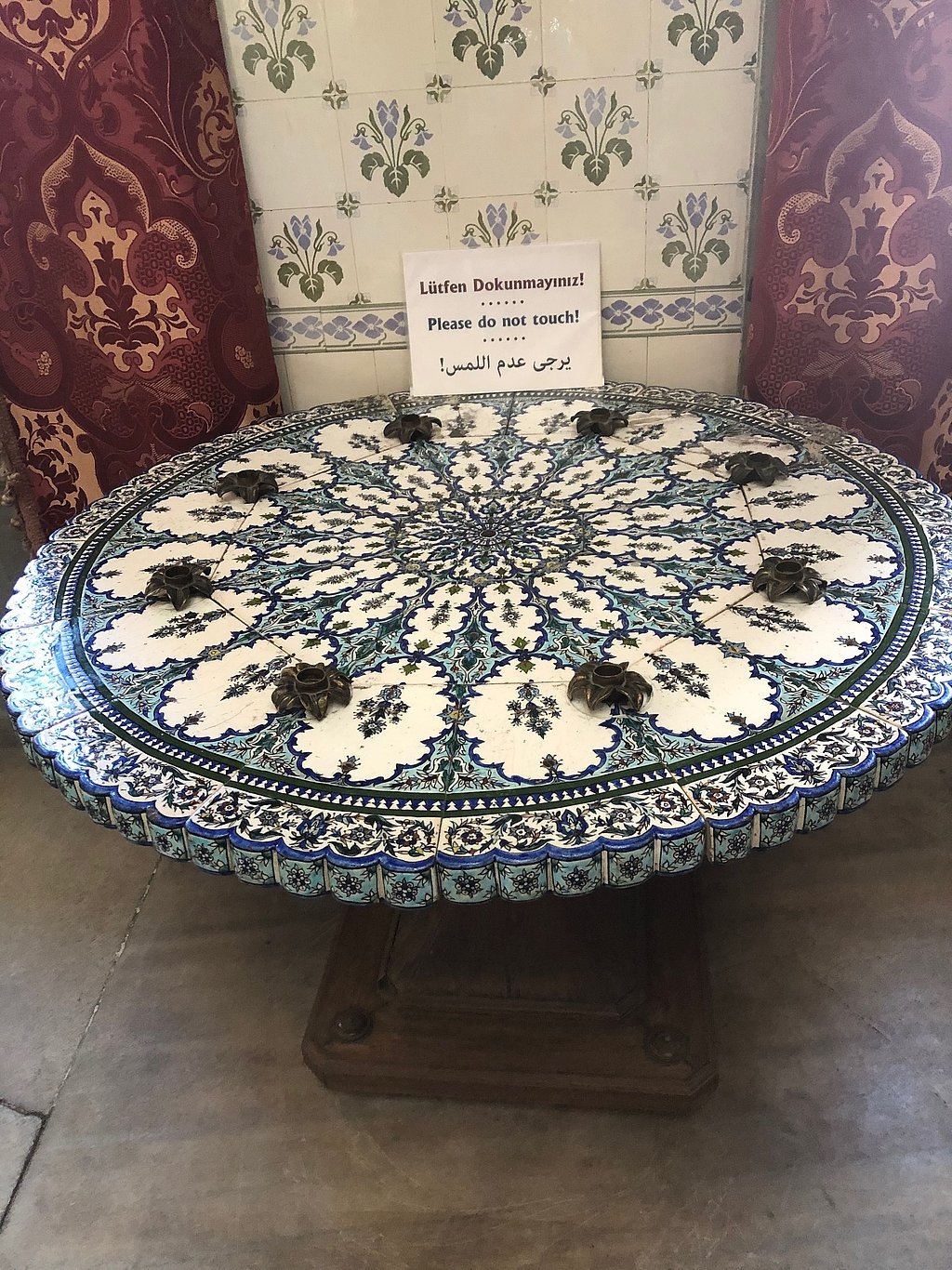
For Schattdecor teams, on many levels, “Mariza” is an almost perfect example of the “mix and match” theme. It combines various influences from all over the world into a harmonious, new approach. In this respect, “Mariza” represents a unifying aesthetic and a homage to an assertive stylistic device of the arts and crafts. Its elements are inter-cultural connectedness, the longing for far-off worlds, curiosity, change and the spirit of discovery.
We wish our mixed, matched and globalized “Mariza” huge success in conquering more and more worlds.
